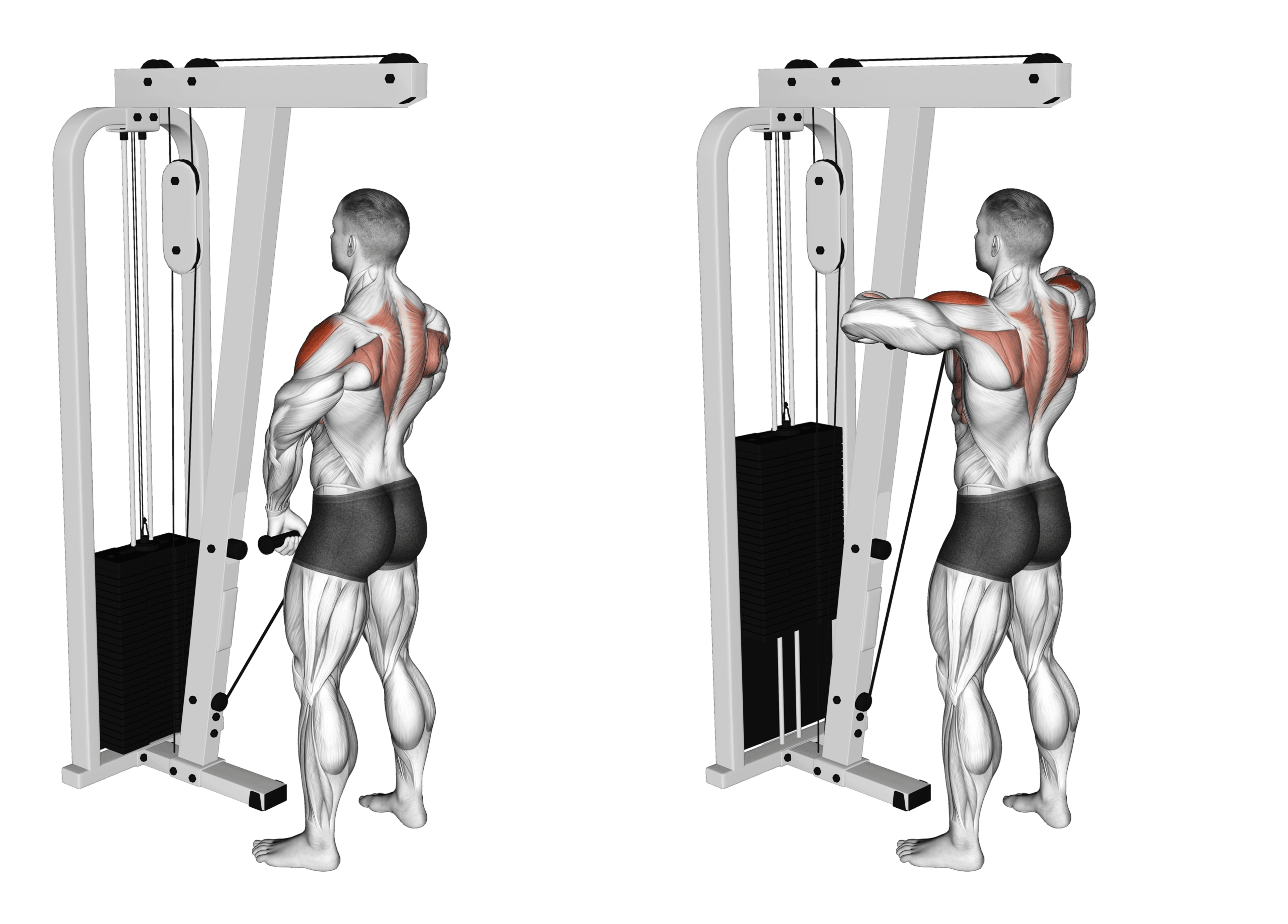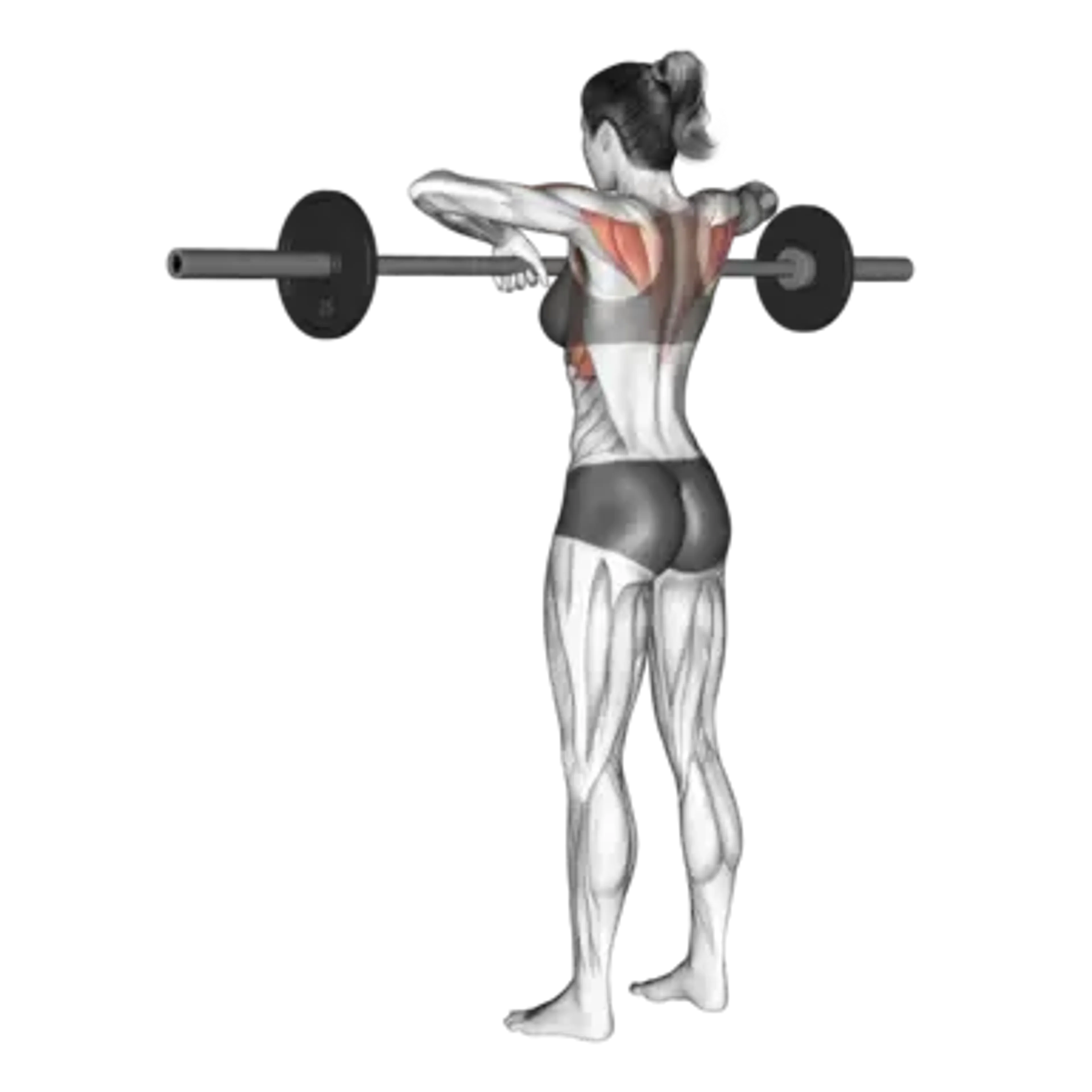Cable Upright Row

Overview
- Primary Focus:
- Shoulders.
- Equipment:
- Cable.
- Difficulty:
- Intermediate.
General Information
Cable Upright Row is a compound exercise that primarily targets shoulders and also engages back, biceps, and forearms. It is an intermediate-level movement that uses the cable’s consistent resistance to guide a smooth vertical pull while keeping tension on the delts throughout the range.
It works well for hypertrophy of the lateral delts and upper traps, especially when free-weight options are limited. The cable path helps you stay close to the body, encouraging a smoother pull and less joint stress for many lifters.
Grip width and handle choice influence emphasis: a straight bar with a shoulder-width or slightly narrower grip typically loads the medial delts, while a rope can allow a more natural wrist line. Moderate loads and controlled tempo usually produce the best mind-muscle connection.
Use it as an accessory after pressing or pulling, or on a dedicated shoulder day. You should feel a strong burn through the side delts and upper back without pinching at the front of the shoulder.
Muscles Worked
- Deltoid
- Primary
- Lower Trapezius
- High
- Biceps Brachii
- Medium
- Brachialis
- Medium
- Brachioradialis
- Minimal
- Serratus Anterior
- Minimal
Instructions
- Set a low pulley with a straight bar or rope and choose a light to moderate load.
- Stand tall with feet hip-width, grip just inside shoulder-width, arms extended with a slight elbow bend.
- Brace your core, keep chest up, and set your shoulders down and back.
- Lead with your elbows and pull the handle straight up, keeping it close to your body.
- Stop around lower to mid-chest height, before your elbows pass shoulder level.
- Keep wrists neutral; do not curl them under the bar.
- Pause briefly, feel the delts and upper back, then lower under control.
- Maintain a pain-free range; avoid shrugging or shoulder impingement sensations.
Common Mistakes
Injuries
Cable Upright Row is a medium risk exercise when performed with proper technique.
Most issues come from pulling too high or letting the shoulders roll forward, which can irritate the front of the shoulder. Keep the elbows below or near shoulder height and maintain a neutral wrist.
If pinching occurs, reduce range, lighten the load, or switch to a rope. Regress to a High Pull with more hip involvement, or substitute with Lateral Raise. Stop if sharp pain or numbness develops.
Alternative Exercises

Frequently Asked Questions
- Q: Is the upright row bad for shoulders?
It can be safe when you stop below or near shoulder height, keep shoulders down, and use a neutral wrist. If you feel pinching, reduce range or switch to a rope.
- Q: What grip should I use?
Shoulder-width or slightly narrower is typical. A rope lets your wrists self-organize and often feels more comfortable.
- Q: How should I load it?
Moderate loads for 8-15 reps work well. Prioritize smooth reps and shoulder comfort over weight.
Overview
- Primary Focus:
- Shoulders.
- Equipment:
- Cable.
- Difficulty:
- Intermediate.




